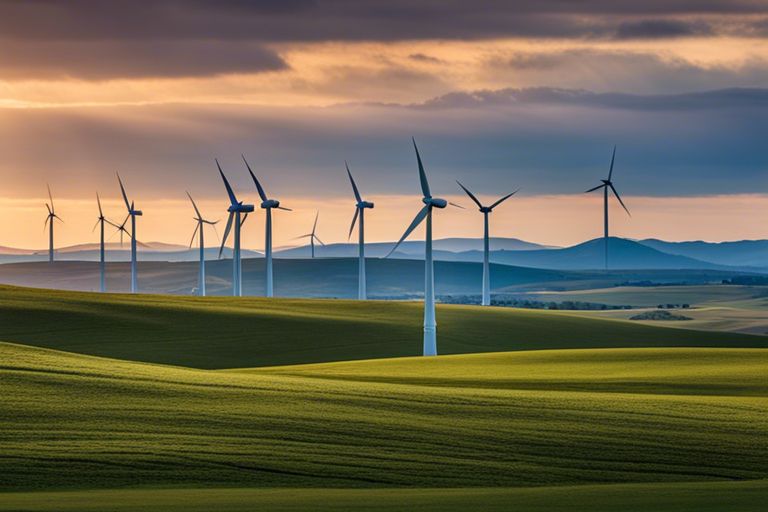With the rise of renewable energy sources, wind turbines have become a prominent feature in the quest for sustainable power. Identifying the optimal locations for these towering structures is crucial for maximizing their efficiency. In this article, we will explore the top destinations in the United States that are ripe for harnessing the power of wind energy, offering insights into the factors that make these locations ideal for wind turbine installations.
Coastal Regions
East Coast Advantages
Before considering the best locations for wind turbines in the US, it is important to understand the advantages that coastal regions offer. The East Coast, for example, has a strong potential for wind energy production due to its consistent coastal winds and proximity to major urban centers. States like Massachusetts and New York have already invested heavily in wind energy projects along their coastlines, taking advantage of the strong and steady winds that blow in from the Atlantic Ocean.
West Coast Opportunities
The West Coast also presents promising opportunities for wind energy development. The winds that sweep in from the Pacific Ocean offer a renewable energy resource that can be harnessed to power homes and businesses in states like California and Oregon. The unique geography of the West Coast, with its mountain ranges and valleys, creates ideal conditions for wind turbines to capture and convert wind energy into electricity.
The West Coast offers a diverse range of environments for wind energy projects, from the windy plains of Washington state to the ridges of the Rocky Mountains in Colorado. These varied landscapes provide opportunities for innovation in wind energy technology and the potential for significant growth in the renewable energy sector along the West Coast.
Another advantage of placing wind turbines in coastal regions is the potential for offshore wind farms. By harnessing the strong and constant winds that blow over the ocean, offshore wind farms can generate large amounts of renewable energy without taking up valuable land space. This innovative approach to wind energy production is gaining traction along both the East and West Coasts, offering a sustainable solution to meeting the growing energy needs of coastal communities.
Great Plains
Windy Cities
Some cities in the Great Plains region of the US are known for their consistent and strong winds, making them ideal locations for wind turbines. To maximize energy production, cities like Amarillo in Texas, and Dodge City in Kansas, stand out as promising hubs for wind power generation. The flat terrain and unobstructed views in these areas contribute to the consistent flow of wind, creating a ripe environment for wind energy projects.
Rural Areas with High Potential
To harness the full potential of wind energy in the Great Plains, rural areas play a crucial role. One such area is the corridor between North Dakota and Texas, known as the “Saudi Arabia of Wind.” The expansive lands in this region offer vast opportunities for wind farms, with strong and consistent winds that can power thousands of homes and businesses.
Great Plains, with its vast stretches of open land and strong, steady winds, presents a prime opportunity for harnessing wind energy. The region’s flat terrain and consistent wind patterns make it a perfect location for wind turbines, offering a sustainable and reliable source of renewable energy for years to come.
Mountainous Regions
Elevated Wind Speeds
One of the key advantages of setting up wind turbines in mountainous regions is the consistently elevated wind speeds. The higher altitudes and uneven terrain lead to stronger and more consistent winds, making these areas ideal for harnessing wind energy.
Challenges and Opportunities
On the flip side, building and maintaining wind turbines in mountainous regions pose unique challenges. Harsh weather conditions, difficult terrain, and limited accessibility can increase construction and operational costs. However, these challenges also present opportunities for innovation and growth in the wind energy sector.
Opportunities abound for developing specialized technologies and strategies to overcome these challenges. From utilizing advanced materials for turbine construction to implementing smart grid systems for efficient energy distribution, mountainous regions offer a promising frontier for advancing wind energy solutions.
Final Words
As a reminder, the best locations for wind turbines in the US are determined by various factors such as wind speed, proximity to transmission lines, and local regulations. States like Texas, Iowa, and Oklahoma stand out as top contenders due to their strong wind resources. However, with advancements in technology and increased awareness of renewable energy benefits, more regions across the country are becoming viable options for wind energy production. It is crucial to continue exploring and investing in suitable locations to harness the power of wind energy and work towards a more sustainable future.

